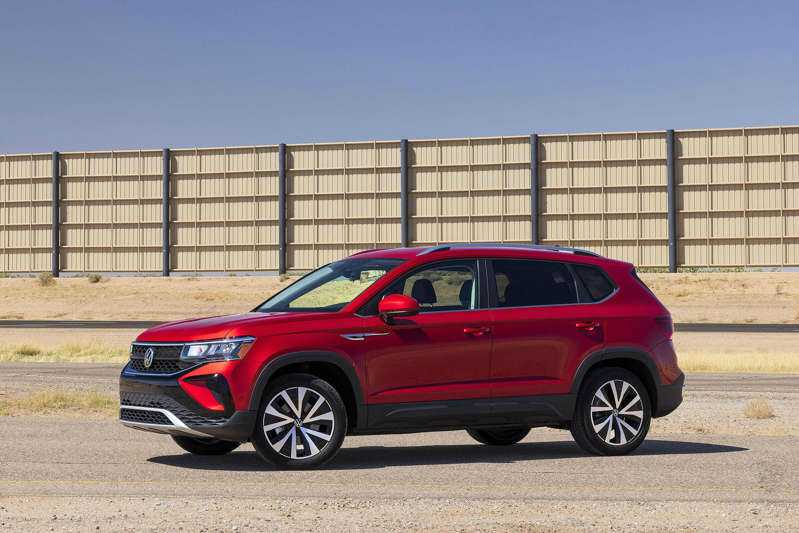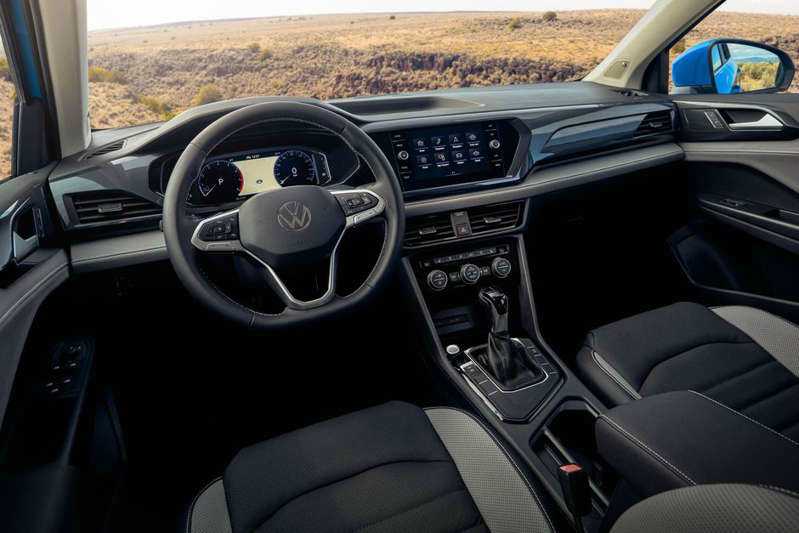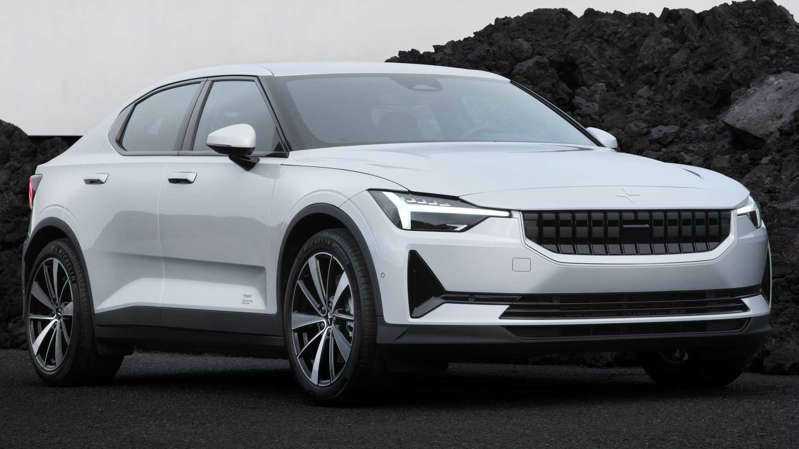Automotive news
2022 Volkswagen Taos first drive review: VW’s got a hit on its hands
Compact and subcompact crossovers are red hot right now and Volkswagen’s been a little late to the game in this regard. But that’s all about to change with the introduction of the 2022 Taos. Smaller than a Tiguan , the Taos is aimed at folks who want a compact vehicle with lots of space inside, all for an affordable price.

a car parked in front of a building© Volkswagen
The Taos measures 175.8 inches long, which is 9.3 inches shorter than the Tiguan. The Taos’ wheelbase is 4 inches shorter than the Tiguan’s and, while the two SUVs are nearly identical in width, the Taos is 2 inches shorter in height. Still, the Taos is a lot bigger than other small crossovers like the Honda HR-V and Nissan Kicks . Instead, the Taos is closer in size to ‘tweeners like the Hyundai Tucson and Subaru Crosstrek .
Inside, the Taos is almost as roomy as its bigger sibling, with 99.5 cubic feet of passenger space compared to the Tiggy’s 101.1. The rear seat has plenty of room for taller riders, with a 6-foot-tall passenger easily able to sit behind me when the driver seat is set for my 5-foot, 9-inch frame.

Overall, the interior design is pretty straightforward and the materials are about average for the subcompact SUV class. The Taos has 28 cubic-feet of space behind its rear seats or 66 cubic-feet when they’re folded flat, which is more than the Jeep Compass and Subaru Crosstrek but less than the Hyundai Tucson.
Volkswagen’s latest MIB 3 infotainment is standard, housed on an 8-inch touchscreen display, with Apple CarPlay and Android Auto included. A larger 10.3-inch screen is available on higher trims and here, CarPlay can run wirelessly.
Stepping outside, the Taos’ face falls in line with VW’s latest design trends. It gets a full-width running light bar like the one on the new ID 4, bringing a little more visual interest to this otherwise staid fascia. With its short overhangs and upright design, the Taos’ proportions are great. I really like it, save for the fake exhaust outlets at the rear. A quick peek under the car reveals the real outlets tucked up under the rear driver’s side. Why companies continue to do this is beyond me.
When it goes on sale this summer, the Taos will be offered in S, SE and SEL trims, all with front-wheel drive. An all-wheel-drive version will follow a few months later. All Taos models will be powered by a 1.5-liter turbocharged I4 engine derived from the 1.4-liter engine in the Jetta . The new 1.5 has special thermal coating on the cylinders to reduce friction, as well as a variable turbocharger for more appropriate application of boost.

a car parked in a parking lot: Volkswagen’s MIB 3 infotainment tech is housed on an 8-inch touchscreen. Volkswagen© Provided by Roadshow Volkswagen’s MIB 3 infotainment tech is housed on an 8-inch touchscreen. Volkswagen
The end result is 158 horsepower and 184 pound-feet of torque. That’s an increase of 11 hp but an identical amount of torque to the Jetta’s 1.4T, but in the Taos, that twist is delivered lower in the engine’s rev range, for smoother and more immediate thrust.
The front-wheel-drive Taos has an eight-speed automatic transmission and less-sophisticated torsion beam rear suspension setup. On a handling course at VW’s Arizona Proving Grounds, the FWD Taos is… fine, completing the slalom’s dry-pavement Moose Test with aplomb. But the AWD Taos is where it’s at.
With its multilink rear suspension, the all-wheel-drive Taos has a much more composed ride. An extra Sport mode also switches up the logic of the seven-speed DCT that really perks up the powertrain. All told, I have to say, the Taos is surprisingly fun to drive. So much so that it might be my new favorite in the subcompact space.
VW’s handling course is best handled in third gear and Sport mode keeps the transmission from upshifting while braking for a turn. The AWD system sends power to the rear to give the back wheels extra grip and the more advanced multilink design means the suspension keeps body motions largely in check. I mean, sure, there’s some body roll, but really just to show you where the Taos’ limits are. The quick steering has instant response and the brakes feel solid and linear, allowing me to brake fairly late before entering hairpin turns.

a car parked in a parking lot: The VW Taos goes on sale this summer. Volkswagen© Provided by Roadshow The VW Taos goes on sale this summer. Volkswagen
Will most buyers care about these sporty driving characteristics? Probably not. Instead, they’ll likely be impressed with how smooth the AWD Taos feels while driving on a rough road. It’s better than the FWD version here, again thanks to the better rear suspension, and while it certainly isn’t what I’d call serene, the Taos has a level of composure that’s hard to find in the subcompact SUV class.
Official fuel economy numbers aren’t available just yet, but VW claims the Taos will have class-leading EPA ratings and best-in-class real-world mileage, too. Considering the breadth of this segment, that’s a bold claim, but when my colleague Steven Ewing drove a Taos prototype last year, he found it quite easy to be frugal in this compact crossover.
Volkswagen’s new IQ Drive suite of driver-assistance features will be available on every Taos, including forward-collision warning with automatic emergency braking, blind-spot monitoring, lane-keeping assist and full-speed adaptive cruise control. They key word here is “available,” however — while some compact crossovers offer many of these features as standard equipment, they’re optional on the Taos.
The company will release full pricing closer to when the Taos hits dealers in a few months, but look for it to start in the low-to-mid-$20,000 range. Sized right, priced right and remarkably nice to drive, I think VW has a real hit on its hands.

This was originally published on Roadshow.
